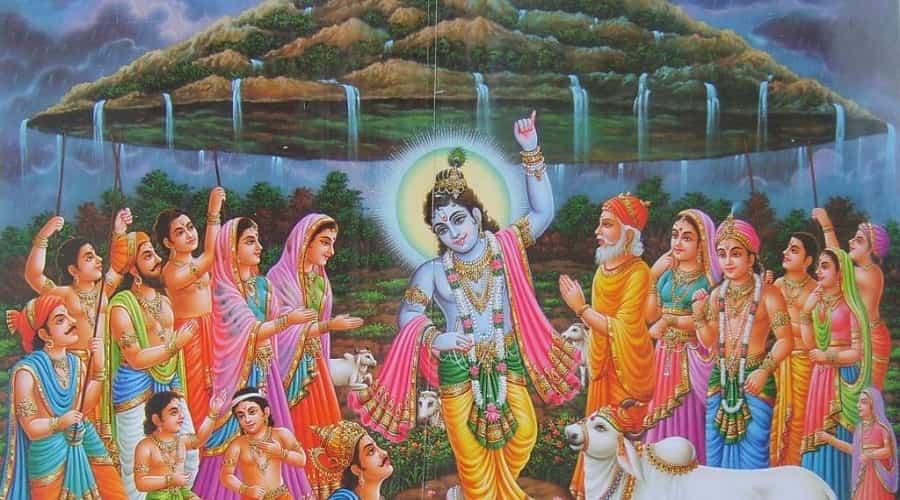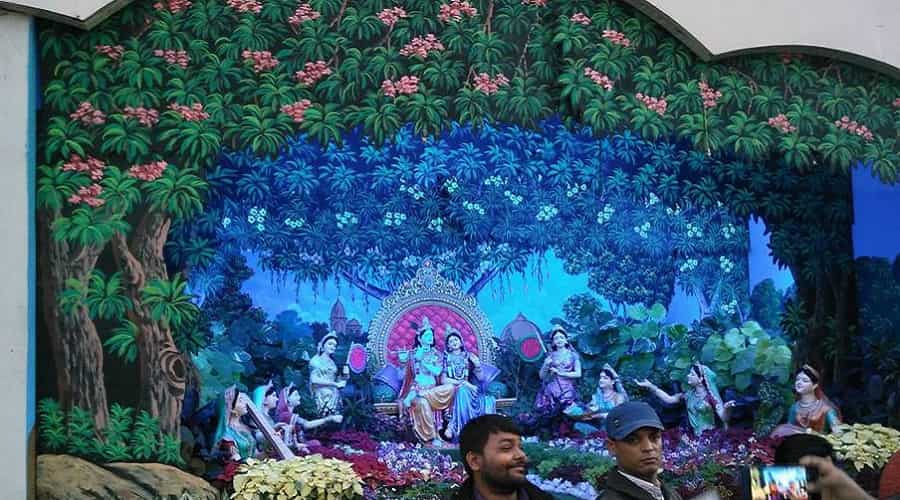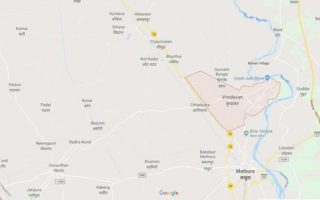
Ancient Heritage
Brij Bhoomi, as it is called by devotees, has an ancient heritage that dates back 5000 years. Lord Krishna was born in nearby Mathura, and Vraj dham (another name for Vrindavan) was once a verdant forest teeming with life. It is here, on the banks of the Yamuna, that the child Krishna played with the Gopis. It is believed that Krishna chose to settle in this area and brought with him divine beings like the Gopis and Vrinda Devi, an avatar of Goddess Lakshmi. Vrinda is represented by Tulsi that once covered the area in the form of twelve sacred forests. These forests include Bilvavan, Lohavan, Bhandiravan, Bhadravan, Talavan, Madhuvan, Bahulavan, Mahavan, Kumudvan, Khadirvan, Kamyavan, and Vrindavan. It is said that Krishna would not accept offerings or food unless they were accompanied by Tulsi leaves.
Mention in ancient texts
Vrindavan is mentioned in several ancient texts. The Bhagavata Purana details the life of Lord Krishna, including his lilas (divine plays) in Vrindavan. The Vishnu Purana also speaks of Lord Vishnu’s reincarnation as Lord Krishna, with Vrindavan as his holy playground. The Ramayana is also connected to Vrindavan. Tulsidas, who wrote the Ramayana in Hindi, visited Vrindavan and prayed to Lord Krishna and Radha. In a symbolic act, he prayed for Lord Krishna to take up the bow, as Lord Rama did, and Lord Krishna responded by putting down his flute and taking up the bow. There is a Tulsidas Temple in Vrindavan at Gyan Gudri.
Vrindavan is also associated with the Mahabharata, as Krishna grew up here and later became the mentor of Arjuna. He recited the Bhagavad Gita to Arjuna on the battlefield. Decades later, Krishna’s great-grandson, Vajranabh, visited Vrindavan and was requested by devotees to restore the sites of Krishna’s lilas. After praying to Lord Krishna, Vajranabh discovered these sites and built temples at the locations where Krishna’s lilas occurred.
Down the Ages
Centuries passed, and the temples built by Vajranabh faded into obscurity. It was not until the Mughal era that Vrindavan was rediscovered. In 1486, Shri Chaitanya Mahaprabhu, believed to be an avatar of Krishna, visited Vrindavan. In October 1512, he found the sites of Krishna’s lilas that were overgrown with forests. His vision helped reveal these sacred places. Under his guidance, his six Goswami disciples restored Vrindavan, rediscovered old sites, and turned it into a religious pilgrimage destination once again. They found self-manifested (Swayambhu) idols of gods and installed them in newly constructed temples. These six temples are now the main temples of Vrindavan: Sri Sri Radha Gopinath Temple, Radha Raman Temple, Radha Gokulanand Temple, Sri Radha Shyam Sunder Temple, Shri Radha Damodara Temple, and Sri Radha Madan Mohan Temple. Other saints like Vallabhacharya, Hit Harivash Mahaprabhu, and Nimbark Swami Haridas Ji are also associated with Vrindavan.
The Role of ISKCON
Srila Prabhupada, the founder of ISKCON (International Society for Krishna Consciousness), also played a significant role in emphasizing the spiritual importance of Vrindavan. He brought devotees from across the world to Vrindavan, furthering its reputation as a sacred place. According to Prabhupada, the merits of devotion are magnified here a thousandfold. Even if one commits offenses or sins, these are magnified here. Circumambulating Vrindavan is said to wash away all sins, and it is equivalent to circumambulating 5000 temples.
In Vrindavan, living next to Lord Krishna is not just a belief but a way of life.
- Also Reads on: List of Popular Ghats in Vrindavan


